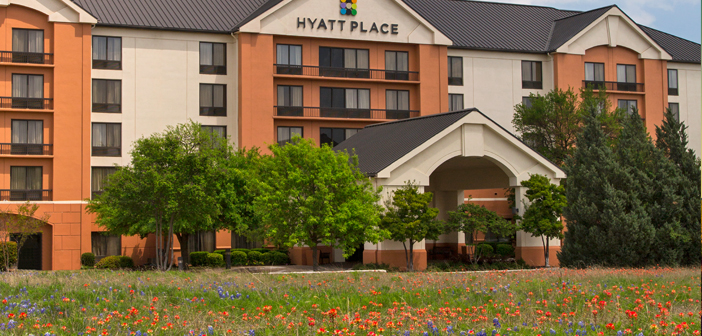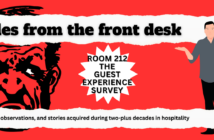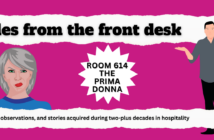Protect your investment with an integrated pest management (IPM) program.
By Patrick T. Copps, MS, BCE
As we head into peak travel season, keep in mind that patrons might not be your only guests – this is peak season for pests, as well. When the seasons change and temperatures heat up, pests leave their winter hiding places in greater numbers. Thanks to fast reproduction and a need for shelter, they may turn to your hotel for a new residence. Below are 10 tips to help prevent pest problems at your hotel.
DON’T LET THE BED BUGS BITE
Every hotelier’s worst nightmare is bed bugs. These pests are more than just a nuisance – they can quickly cause major damage to your reputation, with guests taking to online reviews to warn others. Knowing what to look for is essential in keeping bed bugs away. Bed bugs are flat, reddish-brown, oval insects that resemble an apple seed. Bed bugs aren’t usually visible during the day, so ask your housekeeping staff to look for tiny, rust-colored stains on mattress tags and seams, headboards, night stands and under seat cushions during regular room cleanings. If you suspect bed bugs, do not move any furniture. Call your pest management provider for an inspection immediately.
A POPULAR SPOT FOR GUESTS AND PESTS
Your hotel’s pool area is not only popular with guests, but with mosquitos, flies and stinging pests, as well. Keep the pool area clear of standing water by using a squeegee or broom on the deck – particularly after it rains – and empty any containers that may hold standing water to help eliminate breeding grounds for mosquitoes. Make sure to quickly clean up any food and drinks left poolside to not attract other crawling or flying pests.
CHECK FOR LEAKS
While the pool area might be an obvious choice for pests, be mindful of the areas that are out of the way or hidden to guests. Monitor laundry rooms, restrooms and areas with ice machines for water leaks and condensation as warm, moist areas are conducive to pests like ants and cockroaches.
MAKE SURE THE COMPLIMENTARY BREAKFAST IS FOR GUESTS ONLY
While your guests may love the complimentary buffet each morning, so do pests like ants, cockroaches and flies. Keep an eye out for food and drink spills, and clean them up immediately. Cover serving platters with lids and, immediately following breakfast, seal all food in air-tight containers or place it in the refrigerator. Mid-morning cleanup is one of the most important steps to preventing lingering pests, so vacuum immediately following breakfast to remove remaining food debris, take out the trash to eliminate food odors, and sanitize all tables and counters.
SHOO FLY, DON’T BOTHER THE GUESTS
They may seem harmless, but flies can transfer more than 100 pathogens that can cause diseases in humans and animals. Flies love to feed on potentially contaminated surfaces, like garbage and feces, where they can pick up harmful microorganisms on their bodies and then spread them wherever they land. In fact, if a fly lands on food or utensils, hotel guests may ingest germs that can trigger illnesses such as diarrhea, food poisoning, meningitis and bloodstream infections. To help curtail flies, it’s important to have a stringent sanitation plan in place and keep doors and windows closed as much as possible.
WEATHER PROOFING ISN’T JUST FOR WINTER
If you can see light coming through the bottom of a door, pests can find a way in to your hotel. Insects need just a fraction of an inch to work their way inside. Keep in mind, mice can sneak through holes the size of a dime and rats the size of a quarter. Seal doors and windows with weather stripping, and change the stripping regularly. Install automatic doors and door sweeps where needed; rubberized steel works best to keep pests out. Use air curtains (mounted fans that create a “wall” of air insects can’t fly through) at your high-traffic entrances to make it even harder for pests to sneak in.
WHAT’S HIDING IN THE BUSHES
Rodents and other pests often use ground coverings and foliage as harborage. Once comfortable in the landscaping, they could be tempted to move closer to your hotel building and look for an entryway inside. To create a buffer from rodents, trim back vegetation 18 to 30 inches from the exterior of the building. Instead of laying pest-friendly organic mulch, consider using gravel, pebbles or cedar mulch, which helps repel pests.
TAKE IT OUTSIDE
No matter which pest you’re actively trying to prevent, removing waste daily and lining and sealing trash cans makes a big difference. Once waste is outside, consider using an organic cleaner to break down the residues that create pest-attracting odors in your dumpster, which should also be placed as far away from the building as possible.
ATTRACT TRAVELING SNOWBIRDS, NOT PEST BIRDS
Birds may seem harmless, but their droppings can deteriorate building facades, roofs and ventilation systems and spread disease. Work with a pest management professional to install bird repellents on ledges and block off nesting areas using nets, traps and other structural modifications. Regularly inspect your roof for any openings and nesting sites, especially under and around HVAC units.
GET ORGANIZED
There’s no doubt your hotel accepts countless deliveries each year. These boxes can be carriers for pests such as rodents and cockroaches, so make sure to check for signs of pest activity before you accept shipments. Look for droppings, gnaw marks, and live or dead pests. If you do find any contaminated materials, be sure to bag them up for proper disposal and take them immediately to the dumpster. Even if you don’t see signs of infestation, immediately discard empty cardboard boxes. Cockroaches can use the corrugated cardboard for shelter and even eat the glue that holds boxes together.
To help keep pests from negatively affecting your guest’s experience, work with a pest management professional to implement these tips as a part of your integrated pest management (IPM) program. An IPM aims to help prevent pest problems before they occur with a combination of methods, including stringent sanitation and facility maintenance. ■
Patrick Copps, MS, BCE, is technical services manager for Orkin’s Pacific Division. A board-certified entomologist in urban and industrial entomology, Copps has more than 35 years of experience in the industry. For more information, email [email protected] or visit www.orkin.com/commercial.




